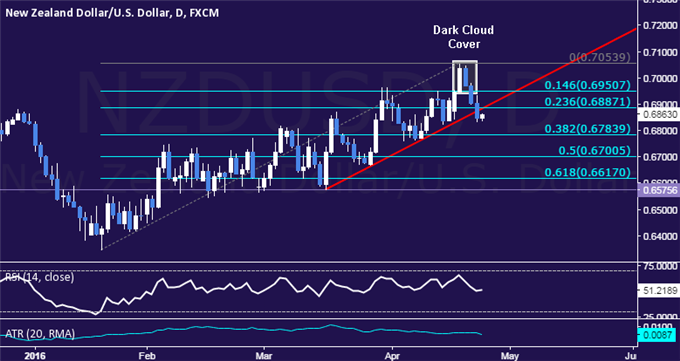To receive Ilya's analysis directly via email, please SIGN UP HERE
Talking Points:
- NZD/USD Technical Strategy: Short at 0.6863
- Kiwi Dollar drops below monthly trend support, hints at deeper losses ahead
- Short trade triggered, aiming for a move below the 0.68 figure vs. US Dollar
The New Zealand Dollar moved lower against its US counterpart as expected after putting in a bearish Dark Cloud Cover candlestick pattern. Prices have now broken below support capping the downside since mid-March, hinting a larger bearish reversal may be in the works.
A daily close below the 38.2% Fibonacci retracement at 0.6784 opens the door for a test of the 50% level at 0.6701. Alternatively, a move back above 0.6887 – the intersection of the 23.6% Fib and trend line support-turned-resistance – paves the way for a challenge of the 14.6% retracement at 0.6951.
Positioning hints the long-term NZD/USD down trend may be resuming in line with our 2016 fundamental forecast and we will enter short, initially targeting 0.6784. A stop-loss will be activated on a daily close above 0.6887. We will take profit on half of the trade and move the stop-loss to breakeven once the first objective is met.
DailyFX SSI bolsters the case for NZD weakness. Learn why and download the app here !








